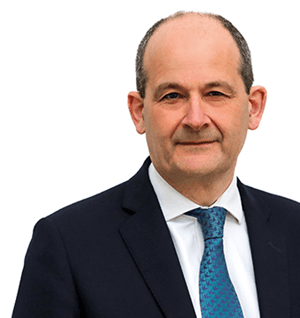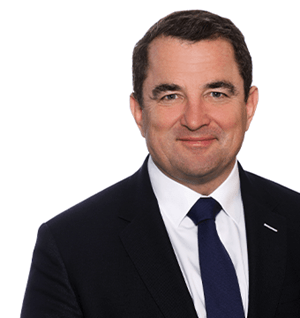Money has been pouring into the life science sector in the last two years, fuelling start-ups and business growth. Naturally, this has had a knock-on effect on property, translating into increased demand, particularly around Oxford and Cambridge. At the recent Carter Jonas’ Commercial Edge webinar, Scott Harkness, Head of Commercial and Will Rooke, Head of Cambridge Commercial Agency, discussed the impact of this on property and how it is shaping the market.
The pandemic has been a big driver for investment into life sciences, having put health in the spotlight. This, coupled with Oxford and Cambridge’s academic prowess, has translated into a bull property market for lab space. As a result, rents and land values have risen, and yields have tightened in both cities. Rooke pointed to lab space rents at Cambridge Science Park, which have reached £48.50 per sq ft, a figure on a par with city centre office rents. “It is likely they will overtake office rents in the next two years,” he added.
Oxford, which historically trailed behind Cambridge’s in terms of rental values, is now at a similar level to Cambridge. Harkness said: “Just over 60% of the space that’s been taken up has been science and predominately lab occupiers - that’s a big shift in the Oxford market”. According to Carter Jonas analysis, the weight of occupier demand means quoting rents for grade A office and lab enabled space are now in excess of £55 per sq ft in Oxford. As the Oxford commercial lab market is relatively immature, a recognised market lab specification has yet to emerge, therefore rental analysis of ‘deals done’ is difficult as most have been turnkey solutions. Occupier demand is coming from a mix of existing life science businesses, which are expanding and start-ups – all fuelled by investors attracted to the opportunity the sector presents.
But it isn’t the only market dynamic pushing up values. Both Oxford and Cambridge have a constrained supply of suitable space. For example, if an occupier is looking for bespoke lab space in Cambridge, Rooke said it would probably be Q1 2024 before it is ready. In Oxford it would be summer 2023. This means there is intense interest from developers and funds looking for opportunities to redevelop older space or convert other uses to capitalise on the demand and jump the queue, due to the shortage of readily developable land.
Rooke used Cambridge Science Park as an example: “When it was first conceived, it was low density, single-storey buildings and lots of car parking. Developer funds are seeing an opportunity to increase density on some of these plots, helped by positive local planning policy. That’s what’s driving values”. It is a similar story in Oxford, Harkness described it as an opportunity to “get more out of your acre”.
Investors and developers are also looking opportunistically at more peripheral locations to add value. Rooke pointed to the Life Science REIT deal to buy phases 1 and 2 of Camborne Business Park. Rents there are £23 per sq ft compared to £48.50 per sq ft for the science park. He said: “Life Science REIT obviously feel that asset can be repurposed and repositioned into a life science model.”
The Grafton Centre in Cambridge was also highlighted as a potential opportunity to provide in-town space. The secondary shopping centre, which sits on a 12-acre site, is up for sale and subject to intense market speculation as to whether it will be bought for conversion into lab space. On a practical level, it has the right floor to ceiling heights for conversion, and it has the power supply and loading for the equipment. “But ultimately, it’s never going to be as good as building from scratch,” said Rooke. It would help satisfy the demand for city-centre dry labs or urban labs for which there is very little provision in Cambridge. The city centre space is currently focused on pure office and traditional businesses. But its one-way life science occupier demand is changing and becoming more complex. The merging of life sciences with digital and AI technology, for example, means increasing demand for dry labs and hybrid space rather than traditional wet labs.
Harkness pointed out that no one life science company operates the same, and gauging individual requirements is important, as is the ability to offer flexibility. “A lot of these businesses are very fast-moving. We see companies in the marketplace taking 1,000 sq ft; the next thing you know, they want 5,000 sq ft and then 30,000 sq ft,” he said. The result is a need for flexible leasing agreements and careful planning for the capital investment required for this type of space, which can be costly. “There needs to be an understanding of occupier requirements and a good landlord/tenant relationship around who’s paying for the fit out. The occupier might not need the space for more than three or five years,” said Harkness.
While established businesses are still a big part of market demand, a change of mindset is needed to satisfy requirements from start-ups that won’t have three years of balance sheets to demonstrate covenant strength. Rooke said some in the property sector are taking a different approach: “Investors and landlords are buying into the business plans of these companies, what they are going to do and their mission and sharing in the growth risk.”
For both Oxford and Cambridge, there is no sign that life science demand will cool anytime soon, which is good news for those in position to snap up development opportunities and create new supply.
View the recording of the Commercial Edge event here >.
Scott specialises in providing advice on agency and development matters to a wide variety of clients from private individuals and trusts through to property funds, institutions, companies and statutory authorities. He advises both owners and occupiers across public and private sectors.
Working at Board level with clients, Scott’s specialist areas include Business development, development of property strategies, property investment advice, advice in the marketing and disposal of property as well as property acquisitions.
Scott has a particular knowledge and understanding of the property market in the wider Oxfordshire region whilst also operating on a national basis on specific projects.
Keep informed
Sign up to our newsletter to receive further information and news tailored to you.





